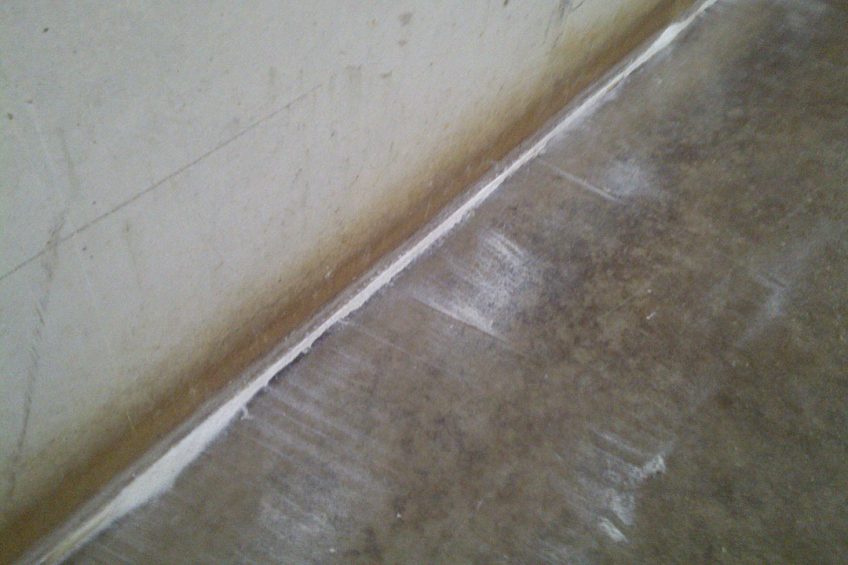Reducing antibiotics: 4-phase farm management blueprint

Reducing antimicrobials from poultry production requires good farm management. Simply defined, farm management encompasses the practices, protocols and environmental conditions in livestock production.
The extent to which antimicrobials conceal farm management mistakes is often revealed when antimicrobials are removed from feed and water. Combined with sound feed and animal health practices, a farm management programme helps producers consistently achieve successful flocks while reducing antimicrobial use. Here follows a phase-by-phase ‘farm management blueprint’ for removing antimicrobials without compromising performance or profitability.
 Pre-arrival phase
Pre-arrival phase
Covid-19 has led to heightened awareness of biosecurity. Practices such as keeping a visitor log are critical to biosecurity on farms. A demarcation line should separate the farm from the outside world and every production cycle must start with a clean slate, making all-in all-out (AIAO) production essential.
As the floor is the chick’s first point of contact on the farm, hygiene starts in the house. Bacteria such as Salmonella and E. coli trapped in cracks can survive and infect the next cycle. Ideally, begin with a smooth concrete floor free of cracks. Given the expense involved in replacing a floor, it can be tempting to resurface or fill expansion joints with lute; but this solution will not last long. While it is not possible to disinfect deep narrow cavities, cracks should be filled with a hygiene aid. Specific blends of organic acids create a barrier that prevents bacteria from growing on litter. Pre-heat the floor to at least 28°C but not above 30°C. A layer of pine wood shavings about 1 to 1.5 kg/m2 deep is sufficient to absorb moisture from chicks’ first droppings.
Clean waterlines, nipples or bell drinkers and position drinker nipples at beak height. To remove biofilm in waterlines, add hydrogen peroxide followed by flushing. Alternatively, add a 30% chlorine solution to waterlines for 24 hours followed by flushing. Check nipples for debris before starting a new flock and fill lines with fresh water at 25°C or cooler. Periodically check farm water quality samples with a lab analysis.

Detergent and hot water will effectively clean the floor, feeders and feeding lines. To remove biofilm and lower bacteria counts in feed lines, heavy coarse raw materials such as oat hulls can be mixed with specific blends of organic acids. Assess silo conditions and remove dirt or clogged feed from walls. Mould inhibitors containing organic acid blends can be blown into the silo to adhere to walls and deter mould formation. Position feed lines in litter throughout the house. Run one line of chick paper next to each water line, then add about 15g of feed per chick to the paper.
The optimum brooding air temperature is about 35°C. Make sure air inlets and mesh wire filters are clean and dust-free. Conducting an air exchange throughout the whole house prior to the flocks’ arrival also supports ventilation. If walls and floor are warm, the house will re-heat quickly. Check that burners are heating properly to avoid elevated carbon dioxide levels or carbon monoxide.
 Antibiotic Reduction – special publication
Antibiotic Reduction – special publication
Moving away from antibiotics can be challenging and requires a new way of thinking. This special edition explores the latest methods for raising healthy livestock without the use of preventive antibiotics.
 Brooding phase
Brooding phase
Chicks are vulnerable with immature digestive and immune systems. Check body temperature, behaviour and feed intake. Body temperature should be around 40°C. Birds huddling together are too cool, so incrementally increase house temperature, then re-check chicks’ behaviour. Birds moving away from each other may be too warm. Keeping water temperature at 25°C or cooler is important. Although flushing is expensive, flush water lines on the first day in hot climates. If necessary, add 10-15g more feed to chick paper 24-36 hours after the chicks’ arrival. Remove all chick paper after 4-5 days, or earlier if signs of mould appear. By 7 days of age, a chick should have reached about 4.5 times its hatching weight.
During the brooding phase, delicate manual adjustments to vents are required to manage ventilation. A 3-4 cm opening provides adequate ventilation, however, some vents may need to be closed to support optimum airflow and temperature. Production climate should inform house ceiling design. In colder areas, a cathedral-style roof with a 35 or 45 degree angle generally supports air movement better. In hot regions a flat low ceiling is not a problem for brooding but helpful in moving air during the grow-out period.
 Pathogens & Prevention – special publication
Pathogens & Prevention – special publication
Producing healthy and safe animal products is key for a successful business. In this special we focus on how to keep diseases at bay via biosecurity measures, management and nutritional interventions.
 Growth phase
Growth phase
Adjust the height of feeders and drinkers to the broilers’ growth stage. It may be necessary to slow growth so a bird doesn’t become heavier than its skeleton can support. Dimmed lights or periods of darkness can slow growth. As it is stressful for broilers to have empty intestines, generally, 2 or 3 1-hour periods of darkness are best. If a bird is 3-4 days ahead of normal intake based on growth charts, take action to slow growth. Check droppings twice daily to assess digestion. Normal droppings are brown, well-digested and clay-like dry. Caeca droppings from the caecum are dark brown to black and sticky like thick paint. Foamy yellow droppings or visibly undigested nutrients suggest not all the protein is being digested.
Water is essential to life and good digestion. Lowering water pH results in a beneficial microbial balance in the pipeline, delivering a bacteriostatic effect in pathogenic bacteria when pH is lower than 4, while not harming good bacteria, such as Lactobacillus. Selko®-pH contains a blend of buffered organic acids that can reduce stomach pH. Lowering the stomach pH, primarily during the first two weeks of a bird’s life, supports protein digestion and broiler performance by improving microbial balance in the water line and the bird.
Adequate climate control is essential during grow-out. Broilers can overheat during the growth phase and spray cooling or pad cooling can help manage this challenge. Ventilators are important in all seasons but air flow is critical during warm periods and in conditions of high relative humidity. Check ventilators regularly to ensure they are dragging sufficient air over the birds. In cool climates, reducing heat or ventilation to cut costs may inadvertently result in gut health problems and the need for antimicrobial interventions.
 Thinning phase
Thinning phase
Prior to final transport, flocks may be thinned by 25% or 30%. Open doors pose climate and biosecurity challenges. Keep doors closed as much as possible to minimise in-house climate change and keep out pathogens. Hang thick plastic sheets in doors to keep external heat out. Avoid additional people entering the house during this period and follow standard biosecurity protocols regarding hygiene, clothing, etc. A production blueprint rooted in sound farm management practices will support consistent and healthy broiler flocks. The will discuss how specific health management can help to further reduce antimicrobials while maintaining performance. An integrator in the Middle East, for example, was able to produce 98.8% of its birds without antimicrobials while decreasing its feed conversion ratio by more than 4%. As one producer says, “If you get birds started on the right path, the only thing required is to slow down their growth.”












